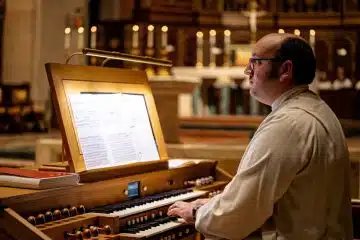Adultery of the Heart Part 2
Note: This article is part of an ongoing series on Pope St. John Paul II’s “Theology of the Body” (TOB).
In the Sermon on the Mount, Jesus taught, “You have heard that it was said, ‘You shall not commit adultery.’ But I say to you that every one who looks at a woman lustfully has already committed adultery with her in his heart” (Mt. 5:27-28). Let us continue to ponder the meaning of adultery of the heart with the guidance of Pope St. John Paul II’s Theology of the Body (TOB).
“Adultery indicates the act by which a man and a woman who are not husband and wife form ‘one flesh’” (TOB 37:6). Both the Old and New Testaments condemn acts of adultery as gravely sinful. Jesus calls His disciples to a yet higher standard. In the Sermon on the Mount, He repeatedly speaks of the dispositions and movements of our hearts. Regarding sexuality, he calls us not only to external respect for the spousal meaning of the body and the requirement of marital fidelity, but also to purity of heart (Mt. 5:8).
To understand this purity of heart and its antithesis in adultery of the heart, Pope St. John Paul II reminded us of the effects of original sin. Recall from our previous reflections how man’s rupture with God in original sin led to disharmony within himself and in his relationships with other human beings. The relationship between the sexes became especially troubled.
Before sin entered the world, man and woman experienced not only original unity but also original nakedness, through which they could be completely exposed (physically, psychologically and spiritually) without fear or shame. This was so because they possessed a fullness of vision through which they beheld each other’s personal dignity through their bodies and naturally experienced respect and gratitude for the gift of the person, culminating in non-possessive, self-giving love. Indeed, the late pope said that our first parents’ way of seeing each other was permeated by a “fullness of consciousness of the meaning of the body” (TOB 12:3).
The form of “looking” or “seeing” being described here is more than mere sense perception. It involves the intentions and desires of one’s heart and is only possible for a pure heart that is sensitive to beholding the transcendent value inscribed by God in created things, especially in the human body. As Pope St. John Paul II wrote:
“Seeing each other reciprocally, through the very mystery of creation, as it were, the man and the woman see each other still more fully and clearly than through the sense of sight itself, that is, through the eyes of the body. They see and know each other, in fact, with all the peace of the interior gaze, which creates precisely the fullness of the intimacy of persons” (TOB 13:1).
After sin entered the world, all of us are affected by concupiscence, which we previously saw refers to disordered desire. While our first parents, prior to sin, experienced the perennial attraction between the sexes, this interior movement was subordinated to their awareness of the spousal meaning of the body. For us who experience concupiscence in our hearts, the sexual desire we experience is always threatened by selfishness. Pope St. John Paul II spoke of how concupiscence “limits,” “violates” and in some cases even “completely deforms” our awareness of the spousal meaning of the body (see TOB 31:6ff). As a result, “The ‘heart’ has become a battlefield between love and concupiscence. The more concupiscence dominates the heart, the less the heart experiences the spousal meaning of the body, and the less sensitive it becomes to the gift of the person” (TOB 32:3).
In this way, sexual desire, which was created good and meant to be integrated into our spousal love, becomes deformed into mere lust, leaving us prone to adulterous acts–both exteriorly and interiorly. We will continue to explore the nature of these interior acts of lust and Christ’s redemption of our sexuality in subsequent reflections.
 Dr. Andrew Sodergren, MTS, PSY.D is a Catholic psychologist and director of psychological services for Ruah Woods Institution. He speaks on the integration of psychology and the Catholic faith. He and his wife, Ellie, have five children.
Dr. Andrew Sodergren, MTS, PSY.D is a Catholic psychologist and director of psychological services for Ruah Woods Institution. He speaks on the integration of psychology and the Catholic faith. He and his wife, Ellie, have five children.
This article appeared in the January 2024 edition of The Catholic Telegraph Magazine. For your complimentary subscription, click here.














